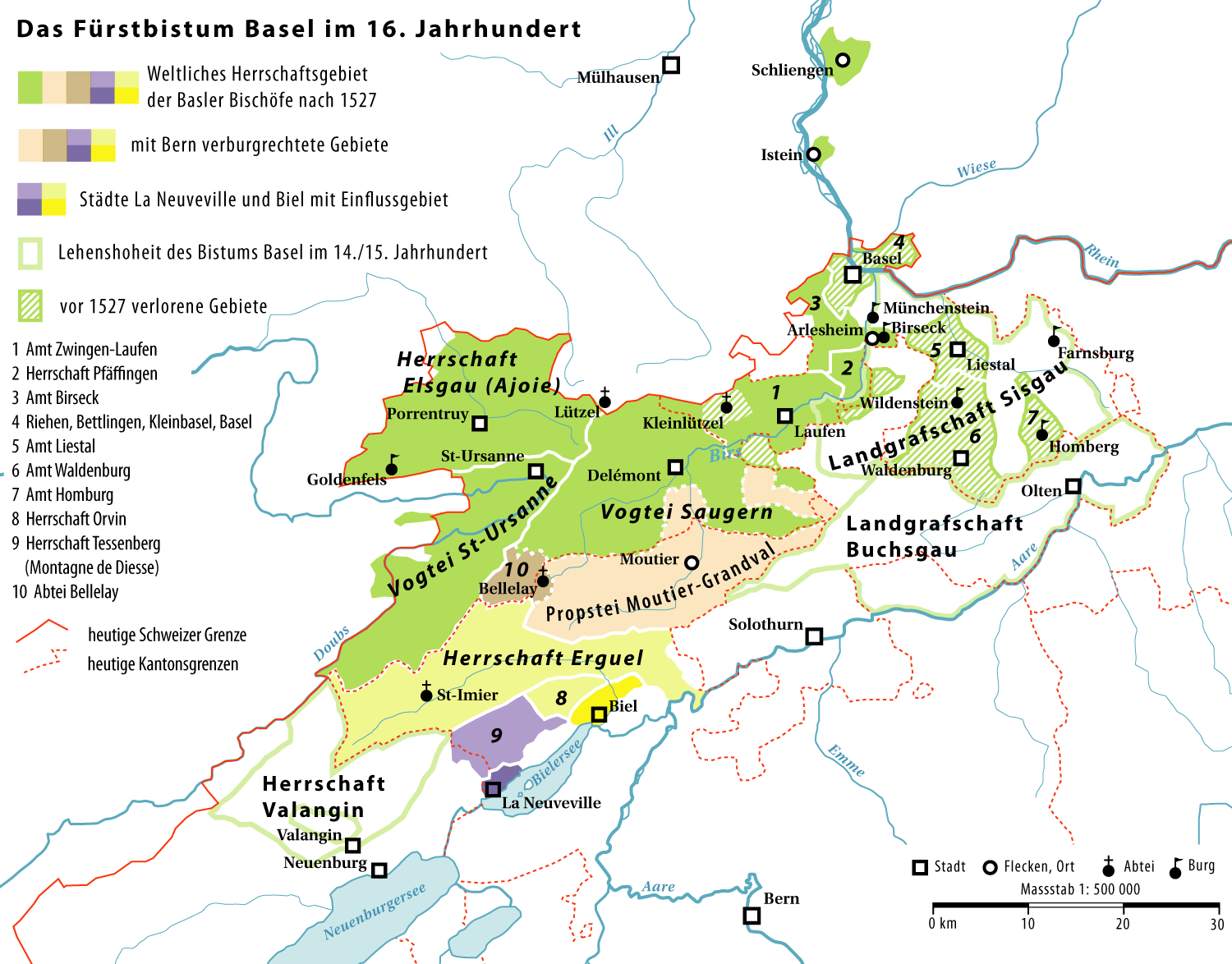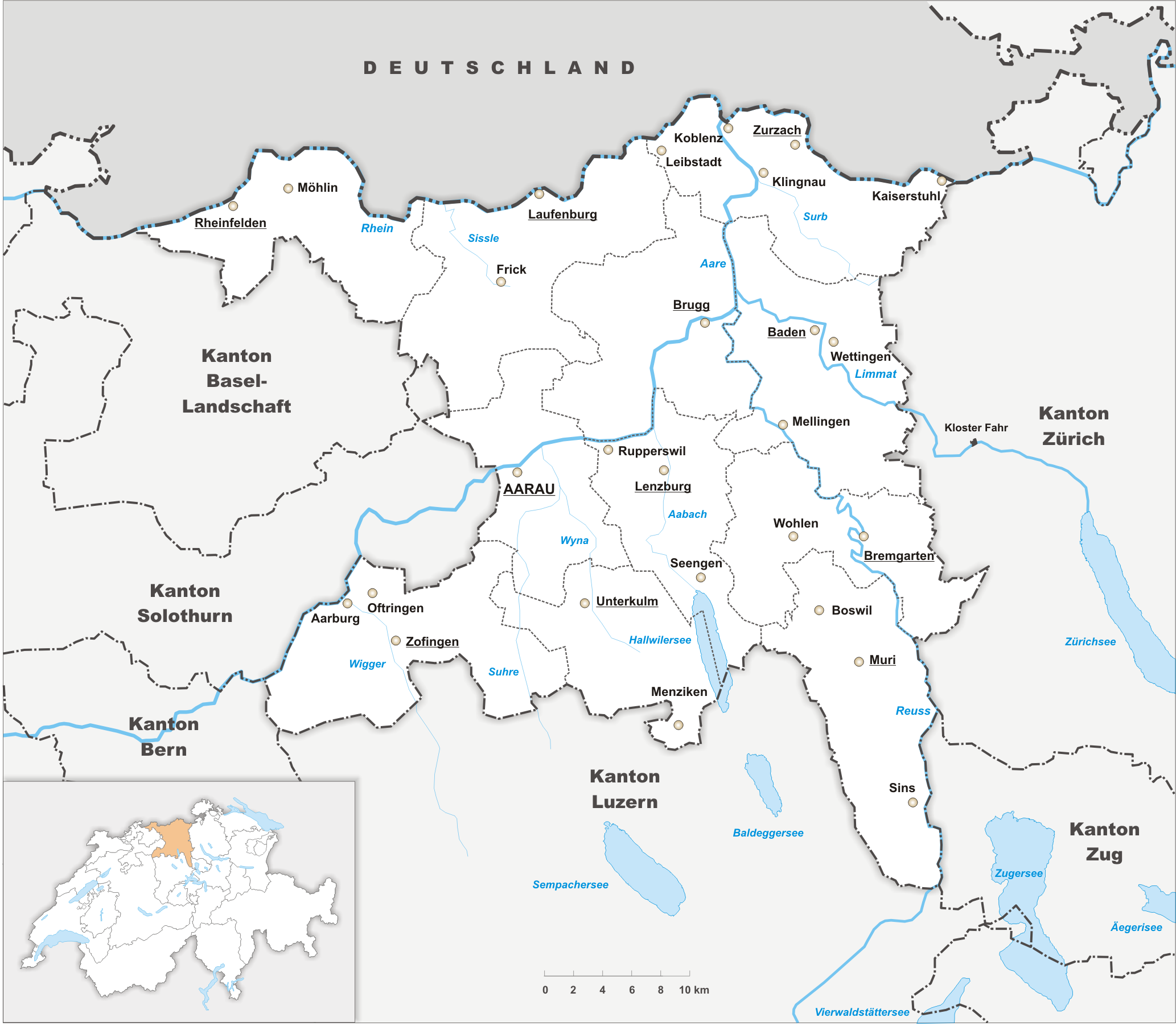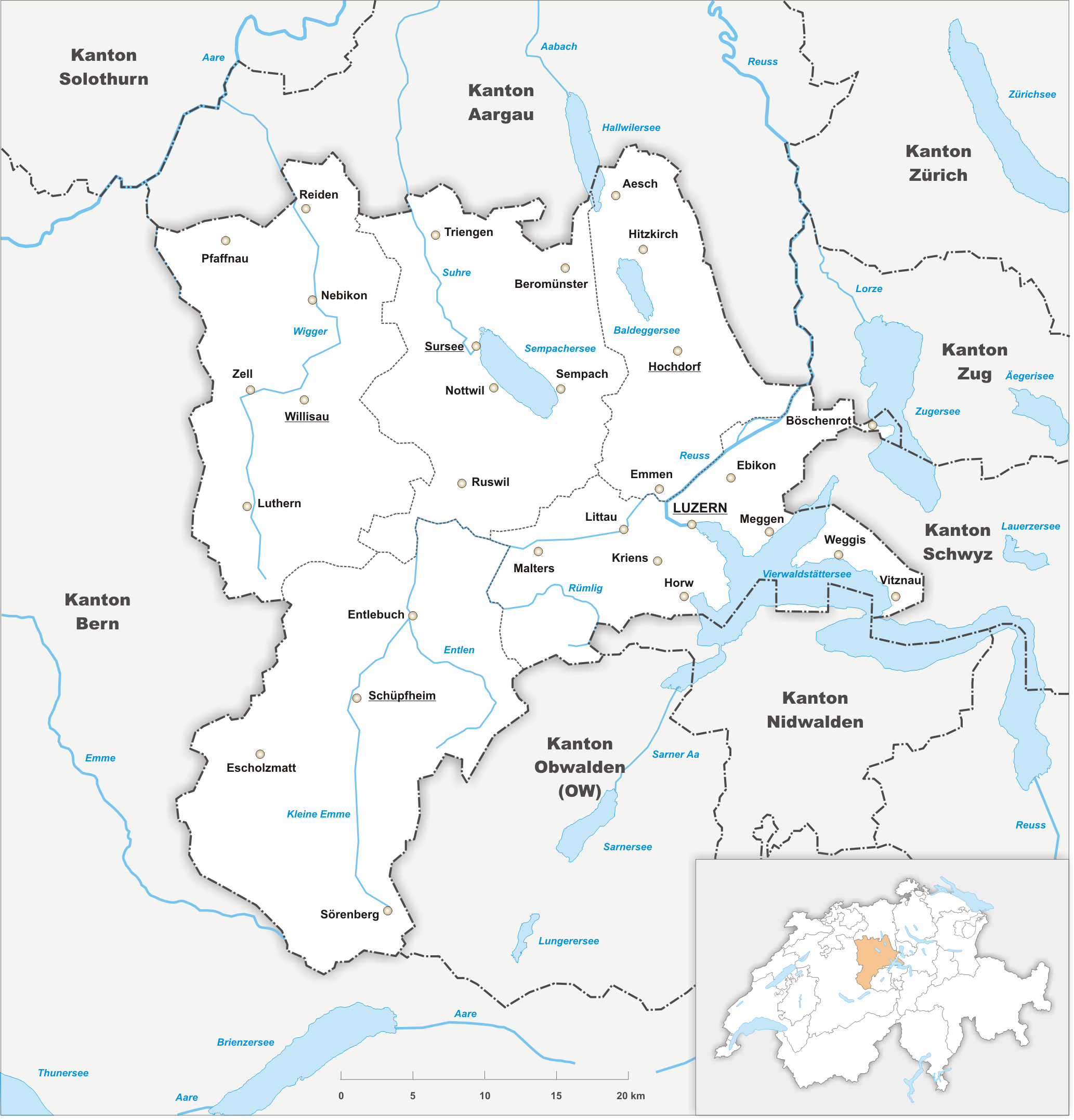|
Canton De Berne
The canton of Bern or Berne (german: Kanton Bern; rm, Chantun Berna; french: canton de Berne; it, Canton Berna) is one of the 26 cantons forming the Swiss Confederation. Its capital city, Bern, is also the ''de facto'' capital of Switzerland. The bear is the heraldic symbol of the canton, displayed on a red-yellow background. Comprising ten districts, Bern is the second-largest canton by both surface area and population. Located in west-central Switzerland, it is surrounded by eleven cantons. It borders the canton of Jura and the canton of Solothurn to the north. To the west lie the canton of Neuchâtel, the canton of Fribourg and canton of Vaud. To the south lies the canton of Valais. East of the canton of Bern lie the cantons of Uri, Nidwalden, Obwalden, Lucerne and Aargau. The geography of the canton includes a large share of all three natural regions of Switzerland: the Jura Mountains (the Bernese Jura), the Swiss Plateau (the Bernese Mittelland) and the Alps (the Bernese ... [...More Info...] [...Related Items...] OR: [Wikipedia] [Google] [Baidu] |
Cantons Of Switzerland
The 26 cantons of Switzerland (german: Kanton; french: canton ; it, cantone; Sursilvan and Surmiran: ; Vallader and Puter: ; Sutsilvan: ; Rumantsch Grischun: ) are the member states of the Swiss Confederation. The nucleus of the Swiss Confederacy in the form of the first three confederate allies used to be referred to as the . Two important periods in the development of the Old Swiss Confederacy are summarized by the terms ('Eight Cantons'; from 1353–1481) and ('Thirteen Cantons', from 1513–1798).rendered "the 'confederacy of eight'" and "the 'Thirteen-Canton Confederation'", respectively, in: Each canton of the Old Swiss Confederacy, formerly also ('lieu/locality', from before 1450), or ('estate', from ), was a fully sovereign state with its own border controls, army, and currency from at least the Treaty of Westphalia (1648) until the establishment of the Swiss federal state in 1848, with a brief period of centralised government during the Helvetic Republic ( ... [...More Info...] [...Related Items...] OR: [Wikipedia] [Google] [Baidu] |
Canton Of Solothurn
The canton of Solothurn or canton of Soleure (german: Kanton Solothurn rm, Chantun Soloturn french: Canton de Soleure; it, Canton Soletta) is a canton of Switzerland. It is located in the northwest of Switzerland. The capital is Solothurn. History The foundation of the village of ''Salodurum'' took place in the time of the Roman emperor Tiberius. The territory of the canton comprises land acquired by the former town, mainly in the Middle Ages. For that reason the shape of the canton is irregular and includes two exclaves along the French border, separated from the rest of the canton by Basel-Land, which form separate districts of the canton. In 1481, the canton became a member of the military alliance of the former Swiss confederation. At the end of the Reformation, Solothurn maintained its Catholic religion. Between 1798 and 1803 the canton was part of the Helvetic Republic. In 1803 Solothurn was one of the 19 Swiss cantons that were reconstituted by Napoleon ('' Mediation' ... [...More Info...] [...Related Items...] OR: [Wikipedia] [Google] [Baidu] |
Alps
The Alps () ; german: Alpen ; it, Alpi ; rm, Alps ; sl, Alpe . are the highest and most extensive mountain range system that lies entirely in Europe, stretching approximately across seven Alpine countries (from west to east): France, Switzerland, Italy, Liechtenstein, Austria, Germany, and Slovenia. The Alpine arch generally extends from Nice on the western Mediterranean to Trieste on the Adriatic and Vienna at the beginning of the Pannonian Basin. The mountains were formed over tens of millions of years as the African and Eurasian tectonic plates collided. Extreme shortening caused by the event resulted in marine sedimentary rocks rising by thrusting and folding into high mountain peaks such as Mont Blanc and the Matterhorn. Mont Blanc spans the French–Italian border, and at is the highest mountain in the Alps. The Alpine region area contains 128 peaks higher than . The altitude and size of the range affect the climate in Europe; in the mountains, precipitation ... [...More Info...] [...Related Items...] OR: [Wikipedia] [Google] [Baidu] |
Swiss Plateau
The Swiss Plateau or Central Plateau (german: Schweizer Mittelland; french: plateau suisse; it, altopiano svizzero) is one of the three major landscapes in Switzerland, lying between the Jura Mountains and the Swiss Alps. It covers about 30% of the Swiss surface area, and is partly flat but mostly hilly. The average height is between and AMSL. It is by far the most densely populated region of Switzerland, the center of economy and important transportation. Geography In the north and northwest, the Swiss Plateau is sharply delimited geographically and geologically by the Jura Mountains. In the south, there is no clear border with the Alps. Usually, the rising of the terrain to altitudes above 1500 metres AMSL (lime Alps, partly sub-alpine molasse), which is very abrupt in certain places, is taken as a criterion for delimitation. Occasionally the regions of the higher Swiss Plateau, especially the hills of the canton of Fribourg, the Napf region, the Töss region, the (lower) To ... [...More Info...] [...Related Items...] OR: [Wikipedia] [Google] [Baidu] |
Bernese Jura
Bernese Jura (french: Jura bernois, ) is the name for the French-speaking area of the Swiss canton of Bern, and from 2010 one of ten administrative divisions of the canton. Comprising the three French-speaking districts in the northern part of the canton, it contains 40 municipalities with an area of and a population () of . More than 90% of the population of the three districts speak French. The Bernese Jura of today comprises only three out of a total of seven districts which were known as the Bernese Jura during the period of 1815–1979. Of the remaining four, three seceded as the canton of Jura in 1979, while the fourth, the Laufen district, joined the canton of Basel-Landschaft in 1994. Additionally, Moutier, a municipality, voted to secede from Bern in a referendum in 2021 and join Jura, with the changeover expected to be implemented by 2026. History Most of the territory of the Bernese Jura was passed from the County of Burgundy to the Bishopric of Basel in AD 99 ... [...More Info...] [...Related Items...] OR: [Wikipedia] [Google] [Baidu] |
Jura Mountains
The Jura Mountains ( , , , ; french: Massif du Jura; german: Juragebirge; it, Massiccio del Giura, rm, Montagnas da Jura) are a sub-alpine mountain range a short distance north of the Western Alps and mainly demarcate a long part of the French–Swiss border. While the Jura range proper (" folded Jura", ''Faltenjura'') is located in France and Switzerland, the range continues as the Table Jura ("not folded Jura", ''Tafeljura'') northeastwards through northern Switzerland and Germany. Name The mountain range gives its name to the French department of Jura, the Swiss Canton of Jura, the Jurassic period of the geologic timescale, and the Montes Jura of the Moon. It is first attested as ''mons Iura'' in book one of Julius Caesar's ''Commentarii de Bello Gallico''. Strabo uses a Greek masculine form ''ὁ Ἰόρας'' ("through the Jura mountains", ''διὰ τοῦ Ἰόρα ὄρους'') in his ''Geographica'' (4.6.11). Based on suggestions by Ferdinand de Saussure, early c ... [...More Info...] [...Related Items...] OR: [Wikipedia] [Google] [Baidu] |
Canton Of Aargau
Aargau, more formally the Canton of Aargau (german: Kanton Aargau; rm, Chantun Argovia; french: Canton d'Argovie; it, Canton Argovia), is one of the 26 cantons forming the Swiss Confederation. It is composed of eleven districts and its capital is Aarau. Aargau is one of the most northerly cantons of Switzerland. It is situated by the lower course of the Aare River, which is why the canton is called ''Aar- gau'' (meaning "Aare province"). It is one of the most densely populated regions of Switzerland. History Early history The area of Aargau and the surrounding areas were controlled by the Helvetians, a member of the Celts, as far back as 200 BC. It was eventually occupied by the Romans and then by the 6th century, the Franks. The Romans built a major settlement called Vindonissa, near the present location of Brugg. Medieval Aargau The reconstructed Old High German name of Aargau is ''Argowe'', first unambiguously attested (in the spelling ''Argue'') in 795. The term ... [...More Info...] [...Related Items...] OR: [Wikipedia] [Google] [Baidu] |
Canton Of Lucerne
The canton of Lucerne (german: Kanton Luzern rm, Chantun Lucerna french: Canton de Lucerne it, Canton Lucerna) is a canton of Switzerland. It is located in the centre of Switzerland. The population of the canton (as of ) is . , the population included 57,268 foreigners, or about 15.8% of the total population. The cantonal capital is Lucerne. History The canton of Lucerne comprises territories acquired by its capital Lucerne, either by treaty, armed occupation or purchase. The first town acquired was Weggis (in 1380), Rothenburg, Kriens, Horw, Sempach and Hochdorf (all in 1394), Wolhusen and Entlebuch (1405), the so-called "Habsburger region" to the northeast of the town of Lucerne (1406), Willisau (1407), Sursee and Beromünster (1415), Malters (1477) and Littau (1481), while in 1803, in exchange for Hitzkirch, Merenschwand (held since 1397) was given up. Prehistory The oldest traces of humans in the Lucerne area are stone artifacts and cave bear bones found in the Ste ... [...More Info...] [...Related Items...] OR: [Wikipedia] [Google] [Baidu] |
Canton Of Obwalden
Obwalden, also Obwald (german: Kanton Obwalden, rm, Chantun Sursilvania; french: Canton d'Obwald; it, Canton Obvaldo), is one of the 26 cantons forming the Swiss Confederation. It is composed of seven municipalities and the seat of the government and parliament is in Sarnen. It is traditionally considered a " half-canton", the other half being Nidwalden. Obwalden lies in Central Switzerland and contains the geographical centre of Switzerland. It is bordered by the canton of Lucerne to the north, the canton of Nidwalden and Uri to the east and the canton of Bern to the south. The canton is essentially in the valley of the Sarner Aa south of Lake Lucerne, with an enclave around Engelberg. It is one of the smallest cantons. The largest town is Sarnen, followed by Kerns and Alpnach. Together with Nidwalden, Obwalden was part of the forest canton of Unterwalden, one of the three participants in the foundation of the Old Swiss Confederacy, named in the Pact of Brunnen of 1315 with ... [...More Info...] [...Related Items...] OR: [Wikipedia] [Google] [Baidu] |
Canton Of Nidwalden
Nidwalden, also Nidwald (german: Kanton Nidwalden, ; rm, Chantun Sutsilvania; french: Canton de Nidwald; it, Canton Nidvaldo) is one of the 26 cantons forming the Swiss Confederation. It is composed of eleven municipalities and the seat of the government and parliament is in Stans. It is traditionally considered a "half-canton", the other half being Obwalden. Nidwalden lies in Central Switzerland. It borders the canton of Obwalden to the west, the cantons of Lucerne and Schwyz to the north, the canton of Uri to the east and the canton of Bern to the south. The canton is essentially in the Alps, south of Lake Lucerne. It is one of the smallest cantons, the population is 40,287 (in 2007). The largest town is Stans, followed by Hergiswil and Buochs. Together with Obwalden, Nidwalden was part of the forest canton of Unterwalden, one of the three participants in the foundation of the Old Swiss Confederacy, named in the Pact of Brunnen of 1315 with Uri and Schwyz. The division of U ... [...More Info...] [...Related Items...] OR: [Wikipedia] [Google] [Baidu] |
Canton Of Uri
The canton of Uri (german: Kanton Uri rm, Chantun Uri; french: Canton d'Uri; it, Canton Uri) is one of the 26 cantons of Switzerland and a founding member of the Swiss Confederation. It is located in Central Switzerland. The canton's territory covers the valley of the Reuss between the St. Gotthard Pass and Lake Lucerne. The official language of Uri is (the Swiss variety of Standard) German, but the main spoken dialect is the Alemannic Swiss German called . Uri was once the only canton whose children in school had to learn Italian as their first foreign language, but in the school year of 2005/2006, that was changed to English, as in other Central and Northeastern Swiss cantons. The canton's population is about 35,000, of which 3,046 (or 8.7%) are foreigners. The legendary William Tell is said to have hailed from Uri. The historical landmark Rütli lies within the canton of Uri. Name The name of the valley is first mentioned in the 8th or 9th century, in the Latinized f ... [...More Info...] [...Related Items...] OR: [Wikipedia] [Google] [Baidu] |
Canton Of Valais
Valais ( , , ; frp, Valês; german: Wallis ), more formally the Canton of Valais,; german: Kanton Wallis; in other official Swiss languages outside Valais: it, (Canton) Vallese ; rm, (Chantun) Vallais. is one of the 26 cantons forming the Swiss Confederation. It is composed of thirteen districts and its capital and largest city is Sion. The flag of the canton is made of thirteen stars representing the districts, on a white-red background. Valais is situated in the southwestern part of the country. It borders the cantons of Vaud and Bern to the north, the cantons of Uri and Ticino to the east, as well as Italy to the south and France to the west. It is one of the three large southern Alpine cantons, along with Ticino and the Grisons, which encompass a vast diversity of ecosystems. It is a bilingual canton, French and German being its two official languages. Traditionally, the canton is divided into Lower, Central, and Upper Valais, the latter region constituting the German ... [...More Info...] [...Related Items...] OR: [Wikipedia] [Google] [Baidu] |











